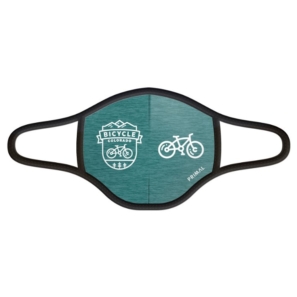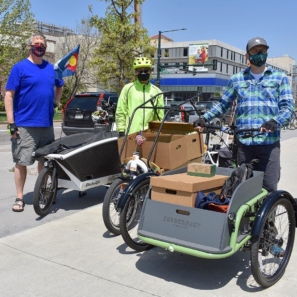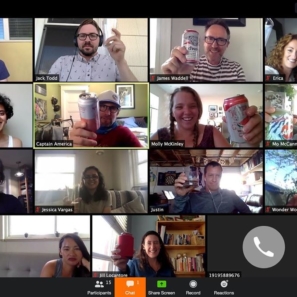Colorado Pedals Project Year 1: CDOT Region 5
In Sept 2015, Governor Hickenlooper announced the Colorado Pedals Project. The goal? To make Colorado the #1 Bike State by 2020.
It’s bold. It’s ambitious. It is absolutely achievable but not without the Colorado Department of Transportation (CDOT) locking its proverbial jaws around every opportunity to include and expand investments in active transportation. With a $1.3 billion annual budget, CDOT has the single biggest impact on creating safe options for people to ride a bike. They accomplish this by incorporating bike facilities into resurfacing projects or by adding stand-alone, multi-use trails as part of a major corridor reconstruction or by asking communities where they have the greatest need to improve safe crossings and access for their most vulnerable road users.
CDOT is a massive and complicated agency with complex funding and even more complex restrictions attached to those funds. Even so, CDOT is doing good work related to bicycling across the state. We have been working closely with both headquarters and all five CDOT regions to represent your interests and further advance the goals of the Colorado Pedals Project. As we enter the second year of the Pedals Project, we thought it would be a good time to recognize current successes and look to even bigger ones on the horizon. This is the first of six blog posts highlighting each CDOT region and headquarters to inform folks about exciting projects happening in their hometowns and backyards.
Region 5
When I spoke with Region 5 Transportation Director, Mike McVaugh, he described his region’s successes this way:
“We have taken a proactive role to focus on providing multi-modal options on our roadways particularly in our towns and cities in western Colorado. For the last several years, we have also been improving bike mobility by adding bike lanes and bike boxes to the urban highway environments and even adding bike detection at signalized intersections. The overall goal of the region is to create a multi-modal environment that accommodates all forms of transportation while improving the communities we serve. We have only touched the tip of the iceberg on this but we can clearly see the benefits of this effort already in how this has transformed the communities we have worked with.”
Mike is most proud of the US 50 bike lanes in Salida and the partnership with Durango to improve ADA accessibility along US 550 in Durango. He is already working on the next big steps for Region 5 including pursuing funding to implement Cortez’s Highway Access Plan and to support the trail coalition working to complete Paths to Mesa Verde, a “16 in 16” priority trail.
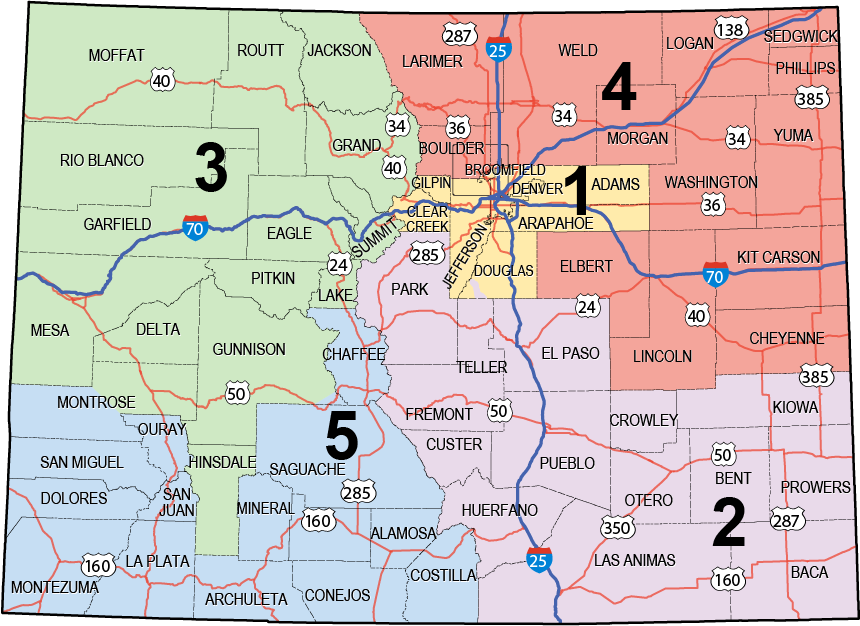
Quick facts about CDOT Region 5
- Includes 14.5 of Colorado’s 64 counties. (Montrose County is split between Regions 3 and 5.)
- Has the only recognized tribal nations in the state: Southern Ute Indian and Ute Mountain.
- Is home to 5 of Colorado’s 26 Scenic and Historic Byways including two of the 11 American Byways in Colorado.
- Is also home to all or part of two of Colorado the Beautiful’s “16 in 16” priority trails: Paths to Mesa Verde and Arkansas River Stage and Rail.
- Includes 4 percent of state’s population.
- Has 3,566 state highway lanes miles, about 15 percent of the total state highway lane miles in Colorado.
- Is the only region without any of Colorado’s 5 Metropolitan Planning Organizations [MPOs].
- Headquarters are located in Durango. Mike McVaugh is the Regional Transportation Director and Thomas “Tommy” Humphrey is the designated Region 5 Bike/Ped Specialist.
Notable Region 5 projects with bike/ped improvements in the past 12 months
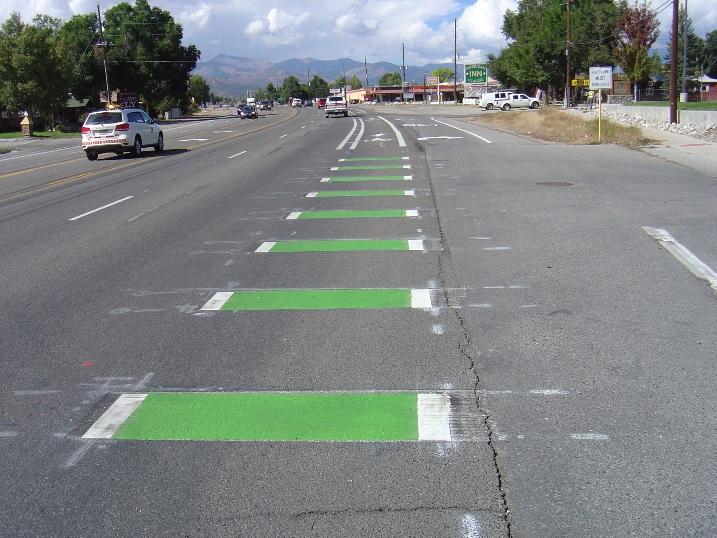
1.) US 50 Bike Lanes, Salida
In response to concerns about safety along US 50 in Salida, Region 5 used “Hot Spot” funds along US 50 to narrow the driving lanes and add buffered bike lanes with green paint. This project improved safety for all road users and was voted “Best City Improvement 2015” in a community newspaper poll.
2.) Signalized Intersections Improvement, region-wide
This project upgraded 45 intersections in several Region 5 municipalities (Alamosa, Bayfield, Cortez, Del Norte, Durango, Mancos, Monte Vista, Pagosa Springs and Salida) as well as adding bike accommodations in three communities along US 160: Del Norte, Pagosa, Springs and Monte Vista.
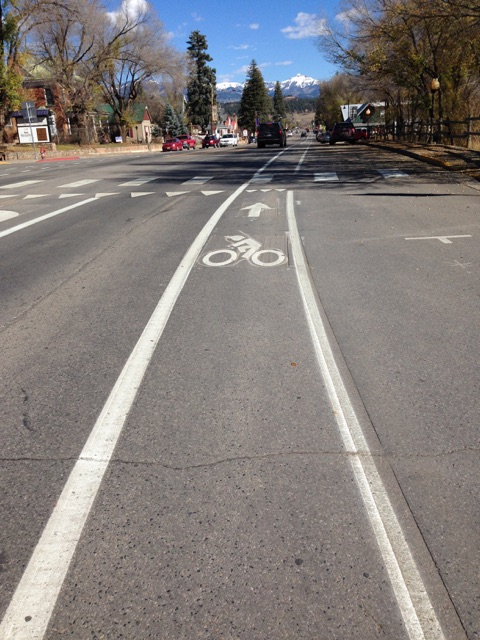
3.) US 160 Road Diet and Bike Lanes, Pagosa Springs
The new striping along US 160 in downtown Pagosa Springs was recently completed and includes bike lanes and a road diet. Both improve safety for all road users as well as access to local businesses.
4.) US 160 Completion of Bike Lanes, Del Norte
As part of its Region 5 Signalized Intersections Improvement project, CDOT added another one-half miles of bike lanes in Del Norte along US 160 near the SH 112 intersection.
5.) US 24 Buena Vista Enhancement Project with Bike Lanes and Sidewalks, Buena Vista
The $5.6M reconstruction of US 24 is anticipated to reduce vehicular crashes and improve safety for all modes of travel. When completed in 2017, it will include dedicated bike lanes, new sidewalks, updated crosswalks, ADA curb ramps and medians.
6.) US 160/US 550 Continuous Flow Intersection
This major intersection overhaul improved bicyclist transportation with bike lanes, bike boxes, green pavement markings, signage and bicycle-capable signal detection as well as median refuges, shortened roadway crossing distance through raised curbed islands, medians, raised crosswalks and rapid flash beacons for improved pedestrian access.
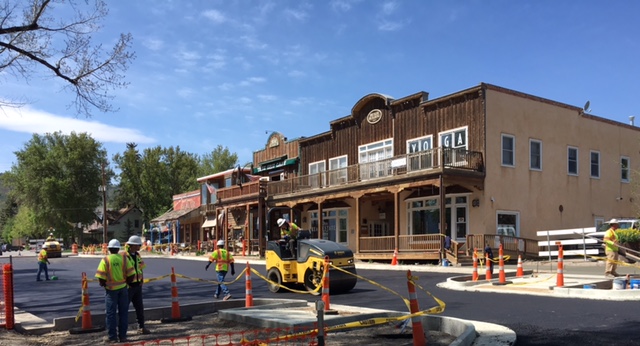
7.) SH 62 Sidewalks, Ridgeway
As part of Ramp Up Ridgeway, CDOT is improving conditions in downtown for pedestrians with sidewalks, ADA curb ramps and bulb-outs (aka curb extensions designed to calm traffic).
2016 Region 5 funding awarded from state agencies and state-wide partners
Even more good things are happening at the local level thanks to grants.
2016 Safe Routes to School:
Safe Routes to School is a program intended to improve the safety of walking and bicycling routes for children, specifically around schools.
- Needham Elementary Connect II, Durango
$350,000 infrastructure grant + $156,140 local matching funds - North Neighborhood, Pagosa Springs
$346,500 infrastructure grant + $93,500 local matching funds - Center Consolidated Schools, Center
$64,399 non-infrastructure grant + $16,100 local matching funds - Citywide education, Durango
$4,000 non-infrastructure grant + $1,000 local matching funds - Retro Metro Kids, Archuleta
$46,160 non-infrastructure grant + $11,540 local matching funds
Transportation Alternatives Program (awarded in 2016 for 2018-2020)
Transportation Alternatives is a federally-funded program that provides grants for projects defined as transportation alternatives.
- Roosa Avenue Connect Sidewalks & ADA improvements, Durango
$948,644 TAP grant + $237,161 local matching funds - Needham Elementary Connect III, Durango
$552,192 TAP grant + $138,048 local matching funds - Pagosa Lakes Commuter Trail, Pagosa Springs
$815,588 TAP grant + $332,393 local matching funds
Colorado Parks and Wildlife Non-Motorized Grants
- Arkansas River Stage and Rail Trail [16 in 16]
$35,000 planning grant
Leave A COMMENT
Our twitter feed is unavailable right now.
The Latest News
view all- Mar 22, 2024
- by Bicycle Colorado
Why Colorado Should Pass SB24-065 To Reduce Distracted Driving
- Advocacy Issues,
- Bicycling in Colorado,
- Bike Law,
- Get Involved,
- Laws & Funding
- No Comments






